Click on images to enlarge
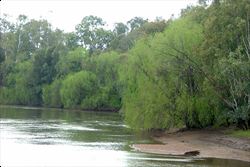
infestation (Photo: Sheldon Navie)
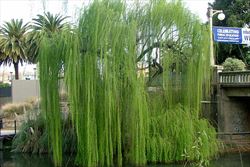
habit with long weeping branches (Photo: Sheldon Navie)

habit with new growth in spring (Photo: Sheldon Navie)
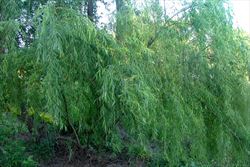
habit in summer (Photo: Sheldon Navie)

rough bark on main trunk (Photo: Sheldon Navie)
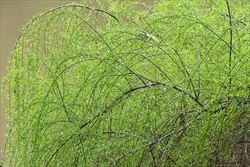
weeping branches with new leaves in spring (Photo: Sheldon Navie)

elongated leaves and greenish-coloured branches (Photo: Sheldon Navie)

green twigs and leaves with finely-toothed margins (Photo: Sheldon Navie)

close-up of new leaves in spring (Photo: Sheldon Navie)
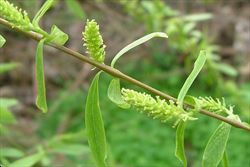
young female flower clusters (Photo: Sheldon Navie)
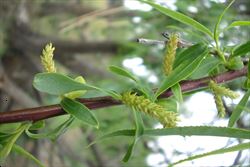
older female flower clusters brownish-coloured older stem (Photo: Sheldon Navie)

close-up of male flower cluster (Photo: Greg Jordan)
Scientific Name
Salix babylonica L.
Family
Salicaceae
Common Names
Babylon weeping willow, weeping willow
Origin
Native to China.
Naturalised Distribution
Widely naturalised in southern and eastern Australia (i.e. in southern and central Queensland, eastern and southern New South Wales, the ACT, Victoria, Tasmania, south-eastern and eastern South Australia, and near Perth in south-western Western Australia).
Also widely naturalised overseas in Europe, southern Africa, New Zealand and the USA.
Notes
Weeping willow (Salix babylonica) is regarded as an environmental weed in Victoria, the ACT, New South Wales, Queensland and Western Australia. This species is widely cultivated in Australia and often becomes naturalised along waterways and around dams.
Though very widespread in Australia, it is not considered to be as invasive as many of the other willows (Salix spp.). It is also one of the few willow species (Salix spp.) that are not included in the Weed of National Significance (WoNS) listing for this group. However weeping willow (Salix babylonica) hybridises with many other willows, the resulting hybrids sometimes being very invasive.

